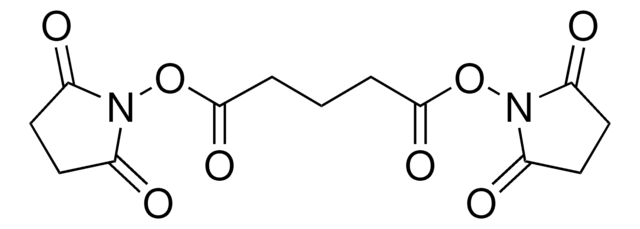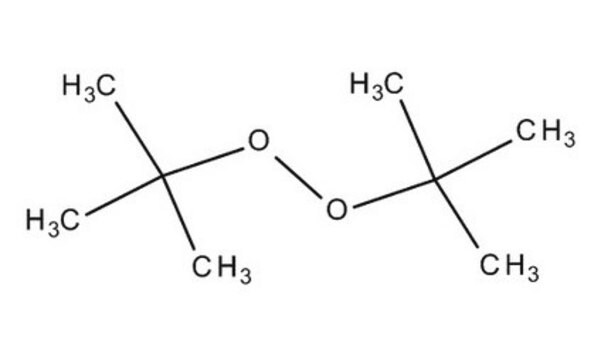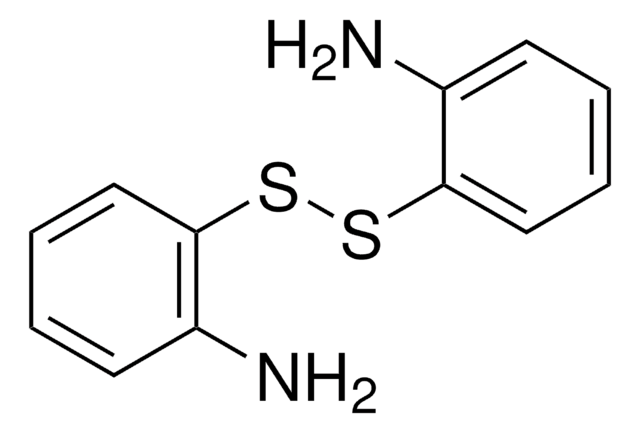Key Documents
D2388
Dimethyl 3,3′-dithiopropionimidate dihydrochloride
powder
Synonim(y):
DTBP, Dimethyl 3,3′-dithio-bis(propionimidate) dihydrochloride, Wang/Richards’ reagent
About This Item
Polecane produkty
Postać
powder
przydatność reakcji
reagent type: cross-linking reagent
rozpuszczalność
H2O: 50 mg/mL
temp. przechowywania
2-8°C
ciąg SMILES
Cl.Cl.COC(=N)CCSSCCC(=N)OC
InChI
1S/C8H16N2O2S2.2ClH/c1-11-7(9)3-5-13-14-6-4-8(10)12-2;;/h9-10H,3-6H2,1-2H3;2*1H
Klucz InChI
CQBCVFHLZAVNPF-UHFFFAOYSA-N
Szukasz podobnych produktów? Odwiedź Przewodnik dotyczący porównywania produktów
Powiązane kategorie
Zastosowanie
- Synthesis of glutathione-sensitive cross-linked polyethylenimine gene vector
- Preparation of cyclodextrin-containing polymers designed for gene delivery
- Crosslinking of chick oviduct progesterone-receptor subunits
Przestroga
Inne uwagi
Hasło ostrzegawcze
Warning
Zwroty wskazujące rodzaj zagrożenia
Klasyfikacja zagrożeń
Skin Irrit. 2
Kod klasy składowania
11 - Combustible Solids
Klasa zagrożenia wodnego (WGK)
WGK 3
Temperatura zapłonu (°F)
Not applicable
Temperatura zapłonu (°C)
Not applicable
Środki ochrony indywidualnej
dust mask type N95 (US), Eyeshields, Gloves
Wybierz jedną z najnowszych wersji:
Masz już ten produkt?
Dokumenty związane z niedawno zakupionymi produktami zostały zamieszczone w Bibliotece dokumentów.
Klienci oglądali również te produkty
Produkty
Kanjiro Miyata (The University of Tokyo, Japan) provides insights on the rational design of polymeric materials for “smart” oligonucleotide delivery.
Nasz zespół naukowców ma doświadczenie we wszystkich obszarach badań, w tym w naukach przyrodniczych, materiałoznawstwie, syntezie chemicznej, chromatografii, analityce i wielu innych dziedzinach.
Skontaktuj się z zespołem ds. pomocy technicznej












